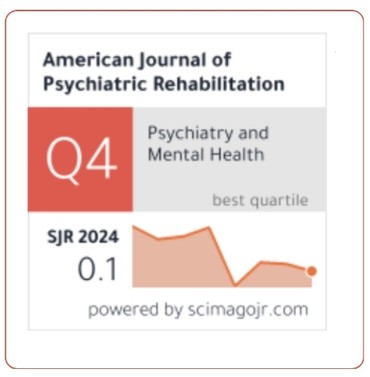Evaluation of Lumbar Disc Degeneration in Postmenopausal Women’s using 1.5Tesla MRI
DOI:
https://doi.org/10.69980/ajpr.v28i5.326Abstract
Lumbar disc degeneration (LDD) is a major cause of chronic low back pain (LBP), particularly in postmenopausal women, due to hormonal and age-related changes. As estrogen levels decline after menopause, degenerative processes in the intervertebral discs are accelerated, leading to reduced hydration, loss of disc height, and impaired function. These changes often result in increased pain and mobility limitations. Magnetic Resonance Imaging (MRI), especially at 1.5 Tesla (1.5T), is a key diagnostic tool for assessing LDD in postmenopausal women, providing high-resolution, non-invasive images of the lumbar spine.
This review highlights the role of 1.5T MRI in detecting degenerative changes, emphasizing advanced imaging techniques such as T2-weighted imaging, T2 mapping, and diffusion-weighted imaging. These methods improve diagnostic accuracy by revealing subtle changes in disc hydration and structure. The article also discusses how estrogen deficiency accelerates disc degeneration by promoting matrix degradation and inflammation.
Additionally, MRI findings such as hypointense T2 signals, Modic changes, and reduced disc height are discussed as important markers in postmenopausal women. These imaging results are crucial for personalized treatment planning. In conclusion, 1.5T MRI is an essential tool for evaluating, monitoring, and managing lumbar disc degeneration in postmenopausal women, aiding in early detection and effective treatment strategies.
References
1. Raj PP. Intervertebral disc: Anatomy-physiology-pathophysiology-treatment. Pain Pract. 2008;8(1):18-44.
2. Battie MC, Videman T. Lumbar disc degeneration: epidemiology and genetics. J Bone Joint Surg Am. 2006;88(suppl 2):3-9.
3. Wang YXJ, Griffith JF. Menopause causes vertebral endplate degeneration and disc pathology. Maturitas. 2014;79(1):4-10.
4. Kepler CK, Ponnappan RK, Tannoury CA, Risbud MV, Anderson DG. The molecular basis of intervertebral disc degeneration. Spine J. 2013;13(3):318-30.
5. Deyo RA, Mirza SK, Martin BI. Back pain prevalence and visit rates. Spine. 2006;31(23):2724-7.
6. Fields AJ, Ballatori A, Liebenberg EC, et al. Contribution of the endplates to disc degeneration. J Orthop Res. 2014;32(4):547-54.
7. Yasuda T, Hori T, Suzuki K, et al. Efficacy of estrogen on lumbar disc degeneration in ovariectomized rats. Spine. 2010;35(5):E127-33.
8. Urban JP, Roberts S. Degeneration of the intervertebral disc. Arthritis Res Ther. 2003;5(3):120.
9. Pfirrmann CW, Metzdorf A, Zanetti M, Hodler J, Boos N. Magnetic resonance classification of lumbar disc degeneration. Spine. 2001;26(17):1873-8.
10. Marinelli NL, Haughton VM, Munoz A, Anderson PA. T2 relaxation times of intervertebral disc tissue correlated with water content and proteoglycan content. Spine. 2009;34(5):520-4.
11. Rannou F, Ouanes W, Boutron I, et al. High prevalence of Modic type 1 changes and Schmorl’s nodes in young adults with LBP. Eur Spine J. 2007;16(1):67-73.
12. Castro FP, Martinez CR, Kim H. The role of HRT in lumbar disc health: MRI analysis. Maturitas. 2020;134:10-16.
13. Griffith JF, Wang YXJ. Effects of estrogen deficiency on vertebral degeneration. Skeletal Radiol. 2013;42(4):437-47.
14. Bartynski WS, Lin L. Modic changes and their implications in back pain. AJNR Am J Neuroradiol. 2017;38(5):943-52.
15. Luoma K, Riihimäki H, Luukkonen R, Raininko R, Viikari-Juntura E, Lamminen A. Low back pain in relation to lumbar disc degeneration. Spine. 2000;25(4):487-92.
16. Choi YS. Pathophysiology of degenerative disc disease. Asian Spine J. 2009;3(1):39-44.
17. Kim HS, et al. T2 mapping for early detection of disc degeneration. Radiology. 2011;259(2):502-10.
18. Jarman JP, Arpinar VE, Baruah D, et al. Intervertebral disc evaluation using MRI T2* mapping. Spine. 2015;40(3):163-70.
19. Samson RS, et al. MRI biomarkers for spine degeneration. Br J Radiol. 2021;94(1124):20210220.
20. Wang D, He X, Wang D, et al. Menopause accelerates lumbar disc degeneration. Eur Spine J. 2020;29(6):1312-9.
21. Qin L, Tam S, Chan K. Sex hormones and disc degeneration. Clin Orthop Relat Res. 2021;479(4):735-47.
22. Takatalo J, Karppinen J, Taimela S, et al. MRI findings in young adults and early disc changes. Spine. 2009;34(15):1716-21.
23. Risbud MV, Shapiro IM. Role of cytokines in intervertebral disc degeneration. Nat Rev Rheumatol. 2014;10(1):44-56.
24. Bao Z, et al. Estrogen and intervertebral disc preservation. Front Endocrinol. 2019;10:693.
25. Liu G, et al. Hormonal influence on vertebral discs: animal models and imaging. Spine. 2022;47(1):50-58.
26. Haughton V. Imaging of the aging spine. Radiology. 2004;231(1):1-3.
27. Pan P, et al. The role of vertebral marrow and disc degeneration. Radiol Clin North Am. 2020;58(6):1077-89.
28. Yang H, et al. Long-term outcomes of estrogen use and spinal health. Maturitas. 2022;160:11-18.
29. Oichi T, et al. Etiology of disc degeneration in menopause. J Bone Miner Res. 2020;35(7):1330-40.
30. Belykh E, et al. Imaging biomarkers in spine degeneration: a review. World Neurosurg. 2021;147:204-17.
Downloads
Published
Issue
Section
License
Copyright (c) 2025 American Journal of Psychiatric Rehabilitation

This work is licensed under a Creative Commons Attribution 4.0 International License.
This is an Open Access article distributed under the terms of the Creative Commons Attribution 4.0 International License permitting all use, distribution, and reproduction in any medium, provided the work is properly cited.









